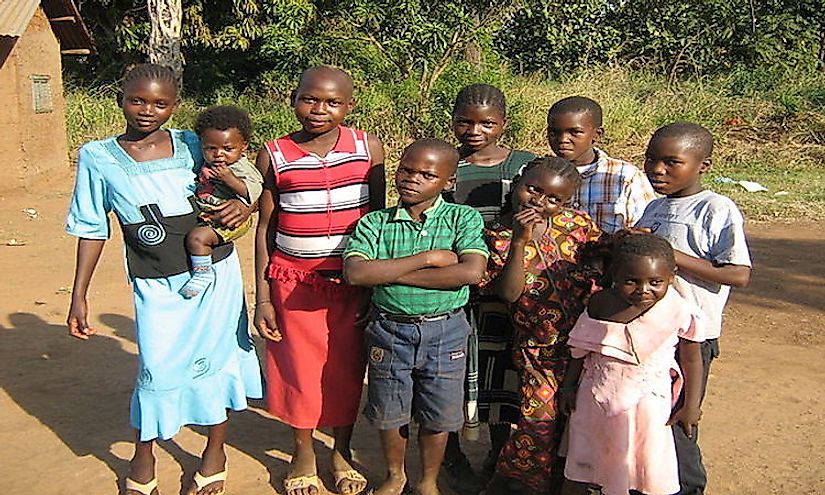Ethnic Groups Of South Sudan

The Republic of South Sudan is a country in East Africa neighboring Kenya, the Democratic Republic of Congo, Uganda, Ethiopia, and the Central African Republic. South Sudan gained its independence from Sudan in 2011, and its capital city is Juba. South Sudan has about 8 to 10 million people with around sixty indigenous ethnic groups in the country. The Nilotic peoples make up a majority of the population of South Sudan, with at least twenty-five ethnic subdivisions. The Dinka are the largest of the many ethnic groups living in the landlocked nation of South Sudan.
Ethnic Groups Of South Sudan
Dinka
The Dinka people are a Nilotic group with no centralized political power but are rather divided themselves into independently interconnected clans. Most of the Dinka community resides in Sudan's Anglo-Egyptian historical province of Bahr el Ghazal. The Dinka traditionally believe in one God known as Nhialic who temporarily possesses individuals and speaks through spirits. Later in the 19th century Christianity was introduced by the British missionaries, and now it predominates as the religion in South Sudan. The Dinka are the most populous ethnic group in South Sudan accounting for 36% of the population.
Nuer
The Nuer are the second largest group in South Sudan and are also Nilotic. The Nuer had a white army who derived their name from applying white ash on their bodies to act as an insect repellent. Originally the white army consisted of armed youth and was established to protect the Nuer people's cattle from other Raiders. After South Sudan's independence, the white army resisted to give up their weapons due to lack of confidence in the SPLA’s ability to protect them which led to the SPLA trying to confiscate their cattle and unsuccessfully destroying their economy. The Nuer accounts for 16% of the population of South Sudan.
Shilluk
The Shilluk are responsible for establishing the Shilluk Kingdom which ruled between 1490 and 1865. The Shilluk King was regarded as divine but is now traditional chieftain operating in both Sudan and the South Sudan region of the Upper Nile. The majority of the Shilluk are Christian converts. The Shilluk also controls the White Nile, and Kodok is the meditating city of the Shilluk King and a place where most ceremonies take place. The Shilluk accounts for 3% of the population.
Toposa
The Toposa are believed to be a part of the Karamajong people who presently live in Uganda having left in the late 16th century finally settling on the eastern side of the State of Eastern Equatorial.
The Toposa practiced cattle, sheep, and goat herding and also took place in the trading of Ivory. The Toposa have been involved with cattle rustling and have fought over water and pasture with their neighboring communities. The Toposa have no distinctive political hierarchy although respect is accorded to the Chiefs, elders, and wise men. The Toposa believe in a Supreme Being and ancestral spirits, and they account for 2% of the population.
Otuho
The Otuho are part of Sudan's Nilotic group that are pastoralists situated in the Eastern Equatorial where they settled in the 1800's. The Otuho speak the Otuho language and have strong beliefs based on nature and ancestral worship. The community holds the land in trust for no particular one in authority. However, in recent times the Otuho and their neighboring community have been in conflict with the Murle who are consistent cattle Raiders who also kidnap their children. The Otuho accounts for 2% of the population.
South Sudan's Demographics
Despite South Sudan attaining its independence in 2011, there are still some inter-ethnic wars that mostly involve land disputes and cattle raiders. The majority of South Sudan's ethnic groups live as communities, and their issues are solved by community elders other than having formal institutions to handle such matters. Most of the ethnic minorities still herd cattle and maintain their traditional ways.
Ethnic Groups Of South Sudan
| Rank | Ethnic Group | Share of Population in South Sudan |
| 1 | Dinka | 36% |
| 2 | Nuer | 16% |
| 3 | Azande | 6% |
| 4 | Bari | 4% |
| 5 | Shilluk | 3% |
| 6 | Toposa | 2% |
| 7 | Otuho | 2% |
| 8 | Luo | 1% |
| 9 | Moru | 1% |
| 10 | Murle | 1% |
| Other Ethnic Groups | 28% |







